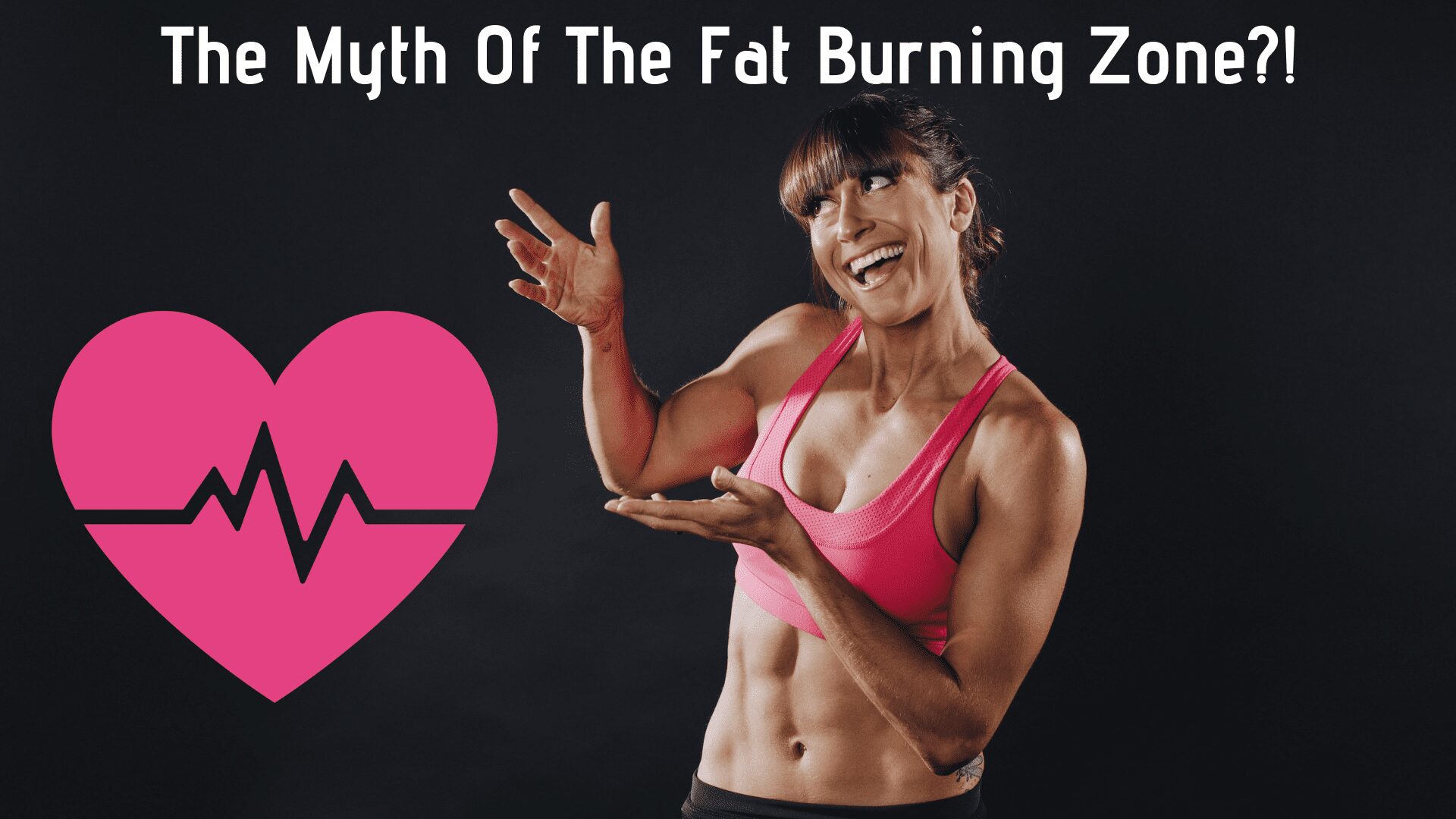So what is this magical “fat burning zone” you’ve heard about?!
Is it true that if you work at a certain intensity during your cardio workouts, you’ll burn more fat?!
Is it also true that you get into that “fat burning zone,” when you do more steady-state, lower intensity cardio?
The simple answer is – the magical “fat burning zone” is a MYTH.
I’ll often have clients tell me they HAVE to run or do steady state cardio to lose weight. (Of course we all too know that diet is key no matter how much we may try to out exercise our poor nutrition choices.)
And not only is the fat burning zone a “myth” but steady-state cardio can yield underwhelming results for weight loss when done on its own.
We need to include workouts that train all 3 energy systems if we want the best results possible, not only for getting in killer shape and improving our health, but also in terms of our weight loss and fat loss efforts!
So…the “fat burning zone,” at least as we wished it worked, is a total myth.
What Is The “Fat Burning Zone?” And How Did The Myth Come About?
The myth of the fat burning zone arose because technically you burn more fat during lower intensity, steady state cardio exercise.
However, what that really means is simply that a higher percentage of the calories you burn during exercise come from fat.
When you work at lower intensities, 50% of the calories burned can come from fat whereas at higher intensities that number may only be about 35%.
So now you’re thinking, “Well then how is the fat burning zone a myth? And why wouldn’t I want to work in it if fat loss and weight loss are my goal!?”
Because while you may burn a higher percentage of calories from fat working at lower intensities, you also burn far fewer calories!
So in the end, you burn more fat by working at a higher intensity because you burn more calories.
And as most of us know, a HUGE part of weight loss is simply calories in vs. calories out.
If you burn more calories while consuming fewer, you’re going to lose weight!
The Downsides Of Adaptation:
So not only do you not really burn more fat in the end with that lower intensity, steady state cardio, but you also burn fewer calories doing the same duration or distances over time.
Basically, over time we ADAPT.
And while this adaptation is amazing, it’s why we can do that 5 mile run without it feeling super hard and even focus on increasing our pace, it also means we require less energy to do the same task.
AKA our body becomes more efficient which means we burn fewer calories during these same workouts that once used to leave us tired and worked.
So unless you’re constantly running (or cycling or going on the elliptical) for LONGER or pushing the pace and going FASTER on harder terrain each and every time, you’re not going to be burning as many calories over time during your workouts.
Again, this is great as it means our body has become stronger and more efficient, BUT it doesn’t lead to continued adaptations or the extra calorie burn that can assist with weight loss.
But What About Boosting Your Metabolism?
Going along the whole fat burning myth, I’ve also had clients also say, “But I need to do cardio to boost my metabolism!”
Unfortunately, this is also sort of a myth.
Not only does steady state cardio not necessarily lead to as great an increase in calories burned AFTER the workout is done as say interval training does, BUT it also doesn’t affect our metabolic rate in the way we believe.
If you want to boost your metabolism, you need to gain muscle.
Muscle affects metabolism and helps you burn more calories, and fat, even at rest.
More muscle means more of a “boost” to your metabolism.
And guess what isn’t so great at helping you build muscle?
Steady-state cardio!
There have even been studies showing that it can actually be CATABOLIC to muscle tissuing, meaning that not only can it not help you build muscle, but it can even lead to some muscle LOSS.
This is just another reason why you want to include cardio workouts that use intervals, density sets and even timed circuits as well as include even moves using weights!
So What Does This All Mean? Should You NOT Do Steady State Cardio?
First off, if you love your long runs or rides, NEVER give them up.
You don’t need to.
And walking can be a great form of stress relief and extra movement for our body which is AMAZING!
Steady-state cardio can help you build a strong aerobic base.
BUT you also want to know what you need to do to reach specific goals.
And if one of those goals IS fat loss or weight loss?
Well you don’t want to ONLY do steady-state cardio.
Including different interval set ups and even cardio workouts with weights can be incredibly important to help you get better results faster.
Even if you want to set a new PR in your next long-distance race or ride, some interval training may be just what you need to get results!
That is why I created my Cardio Burners using a variety of workout design and work to rest intervals so you can make sure you have cardio workouts to help you meet your specific goals!





Wow, thank you for that information. Steady state cardio never made sense to me (for weight loss, AND, runners always look so scrawny and emaciated to me). I appreciate how you explain WHY and HOW this was a myth and which exercises to use to get the most out of our weight loss and health goals.
Thank you so much for being a reliable resource in the health professional field!
Glad the article helped!
I love my long trail runs. But now I am also lifting in the gym 3x per week. You are right about interval training, particularly with your emphasis on dynamic cardio movement such as plyo and sprints. Your programming is superior for runners.
Thank you so much! It’s key we build muscular strength for those runs but also focus on speed and power not just that aerobic endurance during our cardio training!